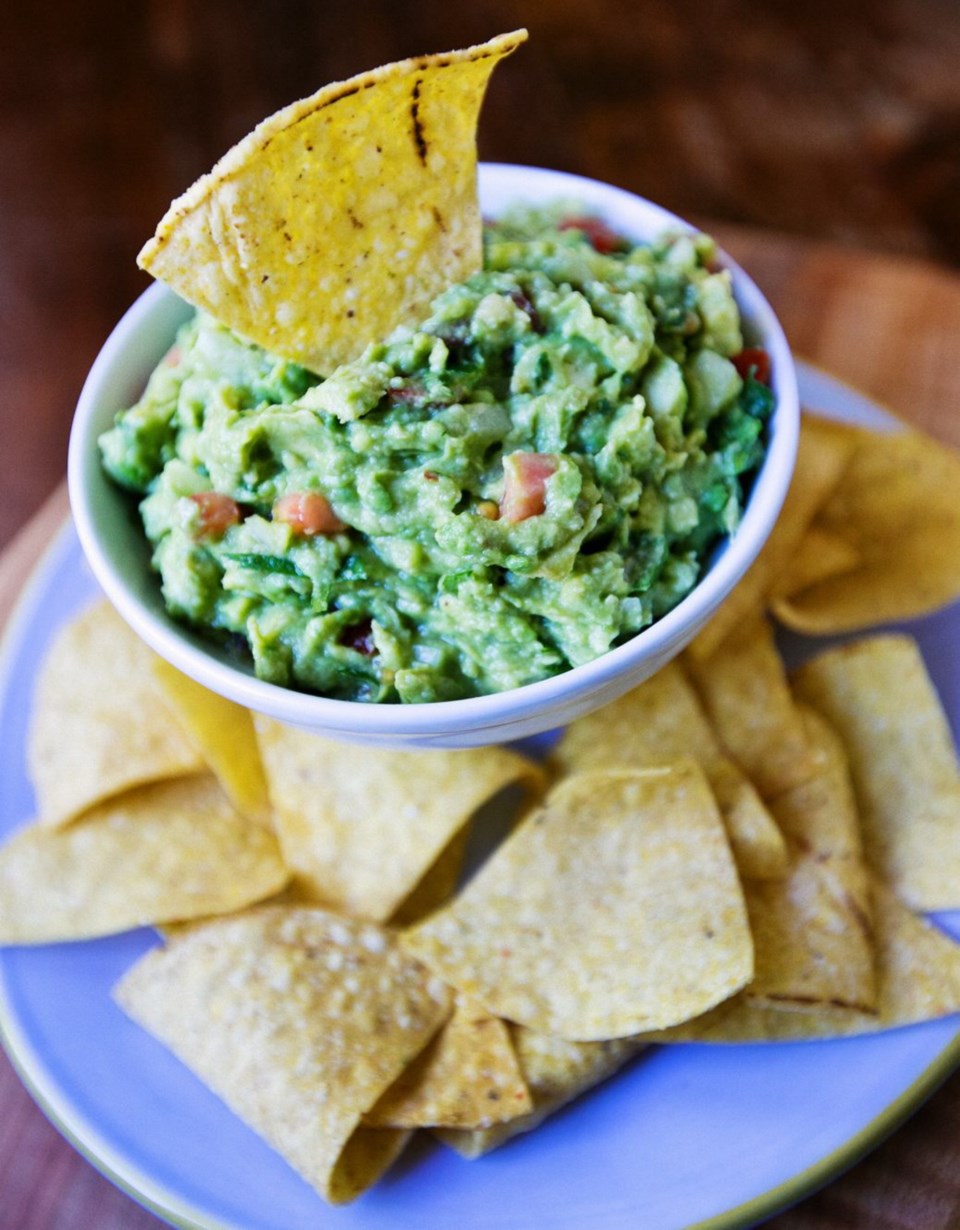 Dear Eric: How do I keep avocado and guacamole leftovers from discolouring? Ann
Dear Eric: How do I keep avocado and guacamole leftovers from discolouring? Ann
Dear Ann: An avocado is an almost perfect ingredient. Its flesh has an appealing yellowish green colour, and its texture and taste are palate pleasing and almost buttery. You can cube, slice, mash or purée avocado and use it in all sorts of ways, in large part because it marries well with many other flavours.
Despite those wonderful qualities, where an avocado can be less than perfect is when its attractive flesh turns a horrid brown. According to Harold McGee’s classic book, On Food and Cooking: The Science and Lore of the Kitchen, the browning of fruits and vegetables such as bananas, potatoes and avocados is caused by three chemical ingredients — phenolic compounds, plant enzymes and oxygen.
When the avocado is intact, McGee says, the phenolic compounds are kept in a storage vacuole. But when the avocado is cut, the phenolic compounds mix with the enzymes and both are exposed to oxygen, causing a reaction that eventually causes the flesh of the avocado to oxidize and darken.
The simplest way to keep that from happening is to eat the whole avocado, or the dish you made with it, shortly after you have cut or prepared it. That said, there are obviously occasions, such as when making a sandwich for one, where you may have half an avocado left over.
To store it, numerous sources suggest that you coat the exposed flesh with lemon or lime juice. The avocado will eventually still go brown but, Harold McGee says, the browning enzymes work very slowly in acidic conditions.
After coating the avocado, you should also tightly wrap it up, or place it in a resealable plastic bag, ensuring you push out any air in the bag before sealing it. Now refrigerate the avocado until needed, as holding it below 4 C can also slow down the browning process.
Under these conditions, the cut avocado should hold its colour for up to two days. If it does turn brown in spots, before using the avocado you could simply scrape or cut those brown spots off.
For diced or sliced avocado, several sources suggest setting them in a container and tossing them with half to one teaspoon of lemon juice per avocado that you’ve cut. Now cover with plastic wrap, ensuring the wrap touches the surface of the avocado, and then refrigerate until needed.
I tried this, but the one change I made was to put the avocado in a tight-sealing container, so the combination of the plastic wrap touching it and the tightly fitting lid would greatly reduce the avocado’s exposure to oxygen. This worked well, and my cut avocado looked pretty good two days later.
Other sources say the best way to prevent cut avocado from going brown is to submerge it in water until you need it. This obviously will work, as oxygen will be prevented from turning the avocado brown. But if you leave the cut avocado in the water too long, the water will eventually penetrate the flesh and soften and dilute its taste.
There is an old wives’ tale that you can prevent mashed avocado — perhaps a bowl of guacamole — from turning brown by placing an avocado pit into the avocado mush. Sad to relate, that notion has been disproven. McGee was one of the experts who tested it. He left two bowls of mashed avocado sitting side by side. In one, he placed an avocado pit. The other bowl had a pit-sized light bulb stuck into it. Both browned at exactly the same rate.
If I have any leftover guacamole, I transfer it to a tall, tight-sealing container with a fairly narrow opening. Doing that means that only a small amount of the surface area of the guacamole is exposed directly to the air. I’ll then brush or drizzle the surface of the guacamole with a little lime juice. The next step is to cover the guacamole with plastic wrap, ensuring the wrap touches the surface of the guacamole.
Finally, I’ll seal the container, ensuring little oxygen gets in.
By doing all of the above, I’ve had guacamole keep its fine colour two to three days. And even if it has darkened on the surface, I’ll simply scrap that bit away and dig in.
��
Guacamole
This is a tasty variation of the classic Mexican-style dip. Served with tortilla chips for dunking, it’s an excellent summer snack.
��
Preparation time: 20��minutes
Cooking time: None
Makes: About 8 (1/4 cup) servings
��
3 medium ripe avocados
2 Tbsp fresh lime juice
1 small fresh jalapeño pepper, stemmed, seeded and finely chopped
1 ripe, medium tomato, finely chopped
1/3 cup finely chopped white onion
1/4 cup chopped fresh cilantro
1 small garlic clove, minced
1/2 tsp ground cumin
* salt to taste
Cut the avocados in half lengthwise and remove the pits. Scoop out the flesh into a large bowl. Add the lime juice and, with two forks or a small potato masher, mash the avocado until it is somewhere between chunky and somewhat smooth. Mix in the remaining ingredients. Transfer to a serving bowl and enjoy.
Eric Akis is the author of the hardcover book Everyone Can Cook Everything. His columns appear in the Life section Wednesday and Sunday.



